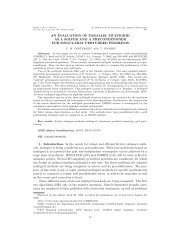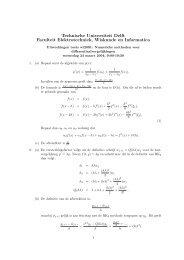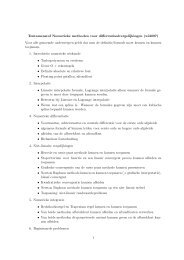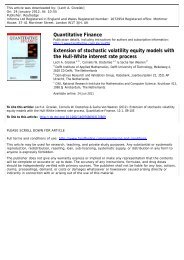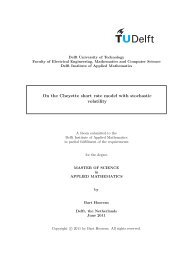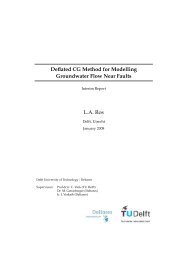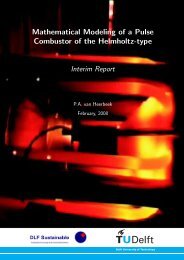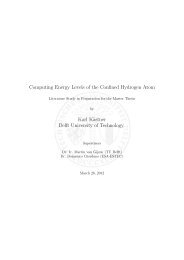Create successful ePaper yourself
Turn your PDF publications into a flip-book with our unique Google optimized e-Paper software.
2log10( Residual / norm(b) )0−2−4−6Wihout1st layer5 layers1st 3rd 5th layer3rd layer5th Layer2nd 4th layeerSubdomain−8−100 10 20 30 40 50 60 70 80 90Iteration stepFigure 6.6: Problem 4 with ASM preconditioning and Incomplete Cholesky FactorizationAgain, one more time we see, that the fastest method is the one with the stiff layers usedto compute the Deflation Vectors. And once again we see that the addition of soft layers hasno affect on the speed.We conclude this section on the base of the presented results with a statement, that the bestchoice to create the Deflation Vectors is a physic based approach, which recognizes areas of thesame material type. Also, we can neglect the soft areas due to the fact, that the influence ofthe stiff domain dominate the effect of Deflation.6.5 Choice of the subdomainsWe already presented some results of the tests which shown us how to choose the subdomainsin the Literature Study Report. However, at that time we did not use Deflation method in it,which can speed up the whole process. Also, the fact that at that time we were working mainlywith Problem 3, which is quite regular. Therefore, we show some of our new results in the caseof the choice of the subdomain, which will confirm our consequent selection of the physic baseddecomposition of the domain.We start with a study of the number of subdomains, for the Problem 4.The problem consistof 120 elements, which compose 6 disjoint layers of the same material type. Each layer can bedecompose into 2 sublayers, hence we deal here with 12 sublayers which can be combined into2, 3, 4, 6 and 12 subdomains. We now present the result of the tests which shows us how thenumber of the specified subdomains affects the convergence rate. We use the Deflation Vectorsmade from the 1st, 3rd and 5th layer (Stiff ones). For the following results, we do not useCholesky Factorisation with a drop tolerance. Instead we use the whole information from it.41




